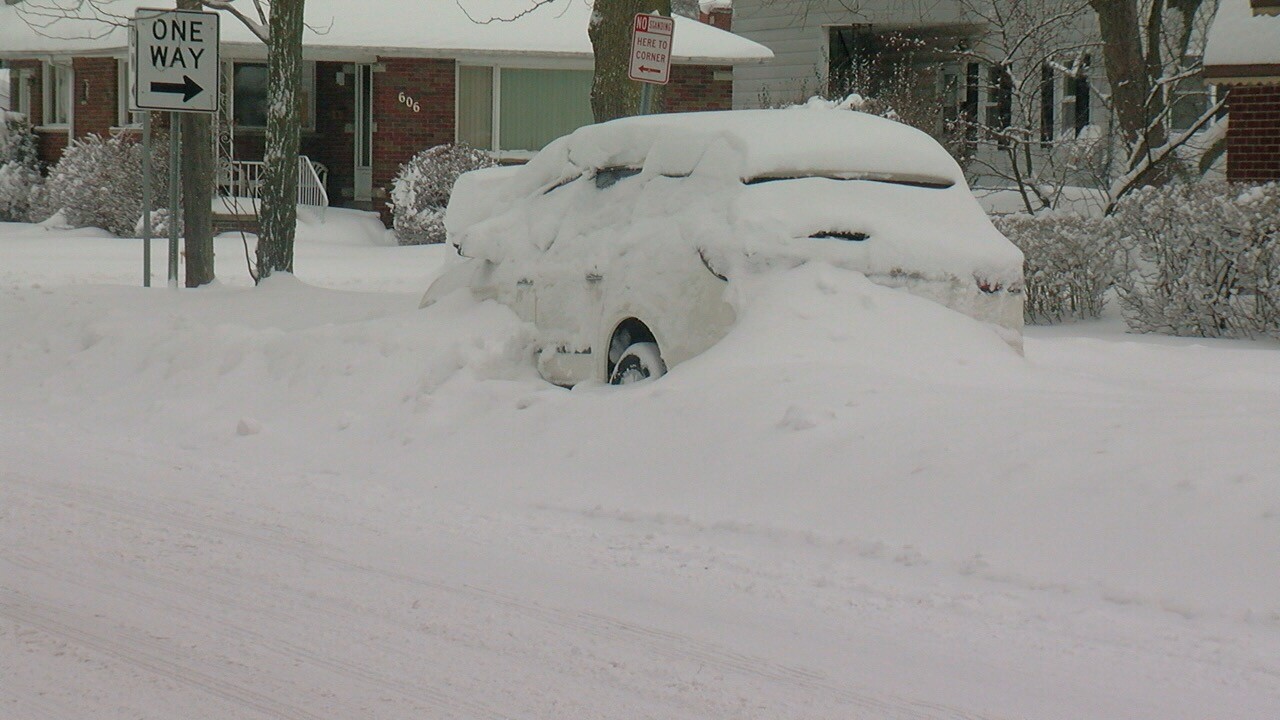BUFFALO, N.Y. (WKBW) — A winter storm watch has been issued for parts of Western New York beginning Thursday evening through Sunday evening.
Over a foot of snow is expected to blanket parts of the region, yet it is still too early to predict what areas will receive the most snow.
With the first snow predicted to come this weekend, here are some tips from the CDC and Consumer Reports on how to prepare and winterize your vehicle.
Consumer Reports has a survival guide of sorts for drivers when it comes to keeping their vehicles in shape during the winter months:
- Good visibility is vital
- Replace windshield wipers if they are leaving streaks of water on the windshield, or if they are showing signs of cracking or stiffness.
- Use a brush and ice scraper to remove snow and ice from windows
- Switch to winter tires
- Winter tires have tread patterns that are designed for traction on slicker roads.
- Keep car battery in good shape
- Cold temps can reduce the cranking power of a car battery,
- If your car uses conventional batteries, you can remove the plastic cap at the top of the battery and check the fluid level. If it's low you can add distilled water.
- If your car uses maintenance-free batteries, you can check the window at the top of the battery and make sure it displaces a fully charged state. If not, you can have it checked at an auto-service station to have it charged.
- Cold temps can reduce the cranking power of a car battery,
- Make sure you use the right engine oil
- The right engine oil for your vehicle can ensure that it doesn't get cold and thick during the winter months
- Check your cooling system
- Extreme cold temps can cause rubber parts of your car to fail
- Check radiator and heater hoses for cracking, leaking, or contamination from oil or grease.
- Cooling systems in most vehicles should be flushed every two years.
- Prevent freeze-ups
- Lubricate trunk and door locks with silicone spray or door-lock lubricant to prevent water from locking you out of your vehicle
- Use lock anti-freeze to thaw your locks if they are already frozen
- Protect your vehicle inside and out
- Give your car a fresh coat of wax before the snow
- Wash it regularly during the winter
- Let your engine warm-up
- Letting your engine idle a bit can give the oil a chance to heat up, and help the car flow more smoothly
Additionally, the CDC recommends creating an emergency car kit, with the following when traveling during a winter storm:
- Cell phone, portable charger, extra batteries
- Items to stay warm such as extra hats, coats, mittens, and blankets
- Windshield scraper
- Shovel
- Battery-powered radio with extra batteries
- Water and snack food
- First aid kit with any necessary medications and a pocket knife
- Tow chains or rope
- Tire chains
- Canned compressed air with sealant for emergency tire repair
- Cat litter or sand to help tires get traction, or road salt to melt ice
- Booster cables with fully charged battery or jumper cables
- Hazard or reflectors
- Bright-colored flag or help signs, emergency distress flag, and/or emergency flares
- Road maps
- Waterproof matches and a can to melt snow for water
Resources


